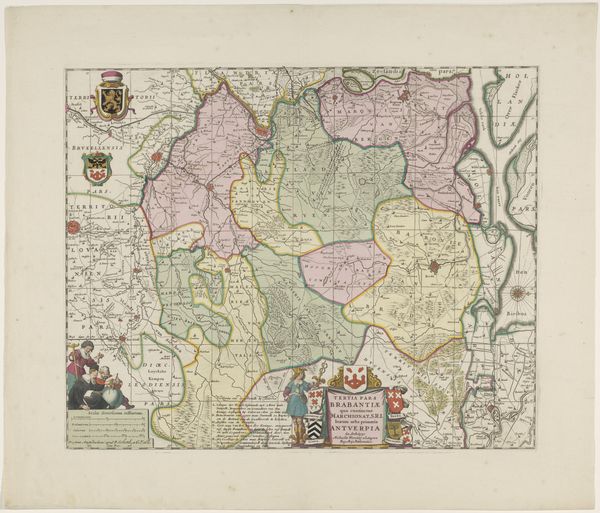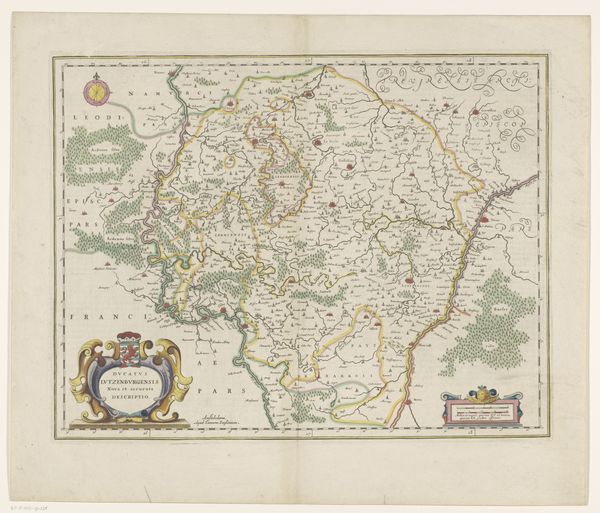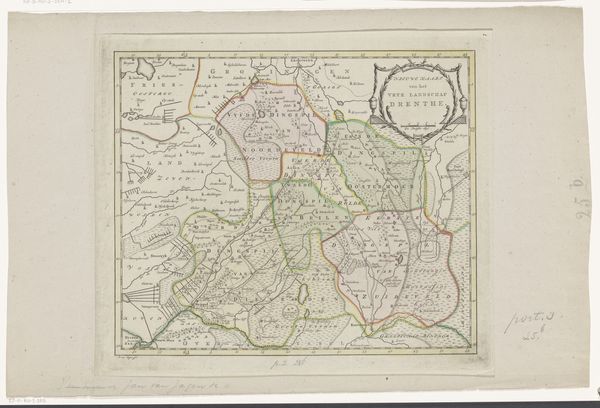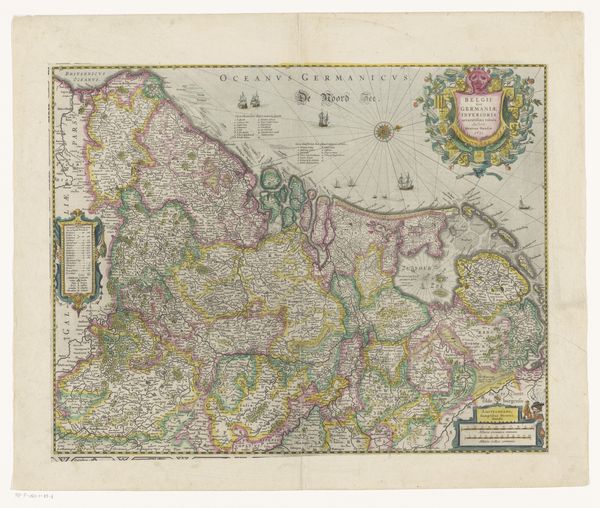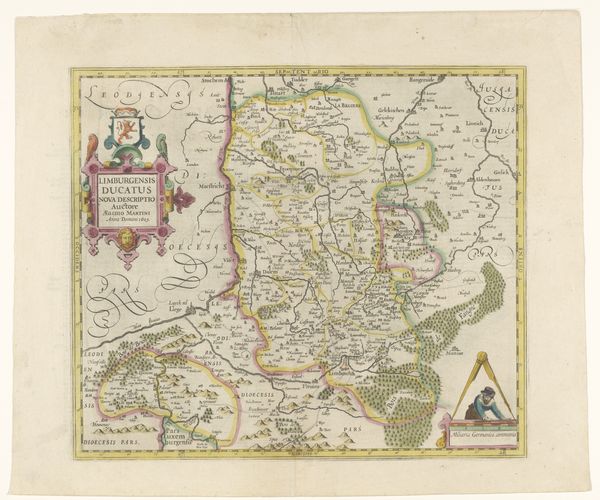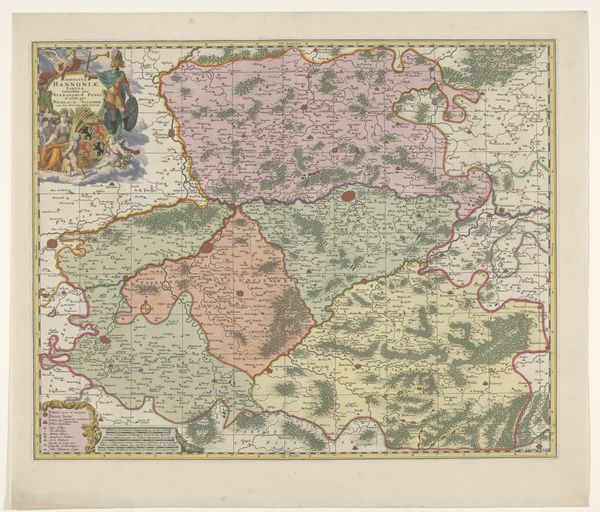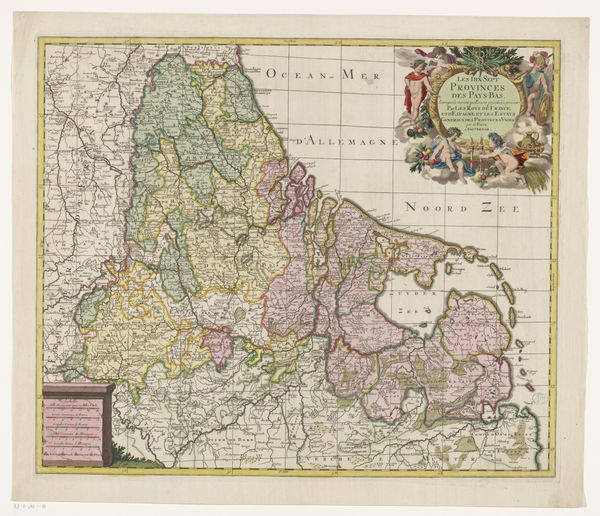
print, engraving
#
baroque
# print
#
old engraving style
#
geometric
#
history-painting
#
engraving
Dimensions: height 378 mm, width 488 mm
Copyright: Rijks Museum: Open Domain
Editor: This is "Kaart van het hertogdom Limburg," a print, an engraving really, made sometime between 1639 and 1711 by an anonymous artist. It's incredibly detailed; you can almost feel the weight of history pressing down. How do you interpret this work? Curator: I see the print as a testament to the means and method of production and dissemination of geographic and political knowledge in the early modern era. The intricate engraving—its lines, the textures achieved—reflects skilled labor but also speaks to the demands of a growing administrative and mercantile class eager for territorial information. Note the explicit naming, not only the place names, but also 'Egidio Martini' - identifying a very specific authority in the material making of this political item. What level of labor and skill do you imagine was necessary for this project? Editor: It must have been substantial, and time-consuming. You can see that in the minute detail, even in what is indicated by the Latin script and flourished edges! Does that intricate level of detail make a claim about the region it depicts? Curator: Exactly! The sheer labor involved elevates the depicted Duchy of Limburg. The materiality of the print itself—paper, ink, the printing press—becomes a symbol of power. Consider, too, the act of consumption: who could afford such a detailed map? And what purpose did it serve in their lives? Editor: It makes you consider it less as a simple record, and more as a potent commodity of its time! Curator: Precisely! This opens the way to consider the map not just as representation, but as an object entangled in social and economic relations, a manifestation of material culture.
Comments
No comments
Be the first to comment and join the conversation on the ultimate creative platform.


